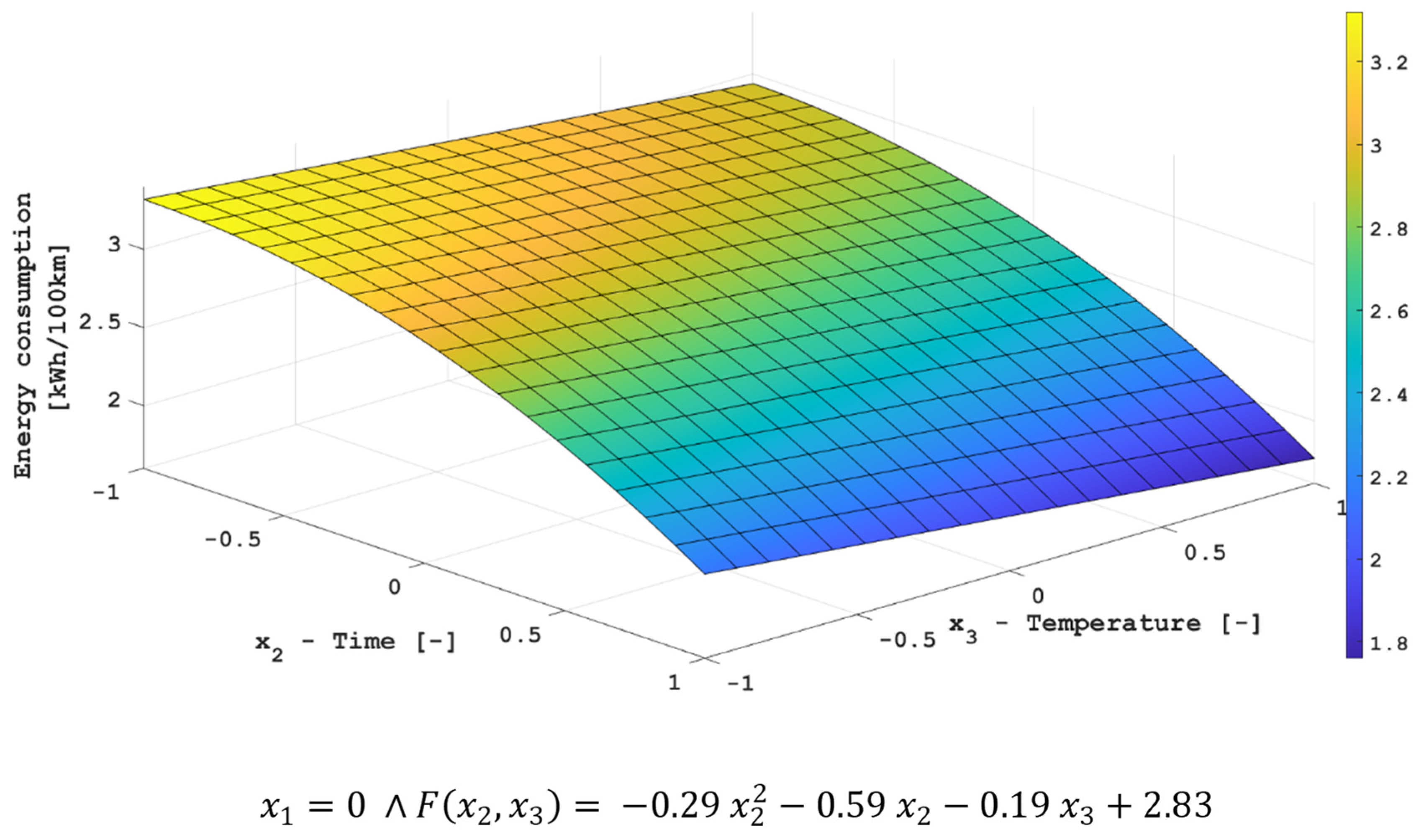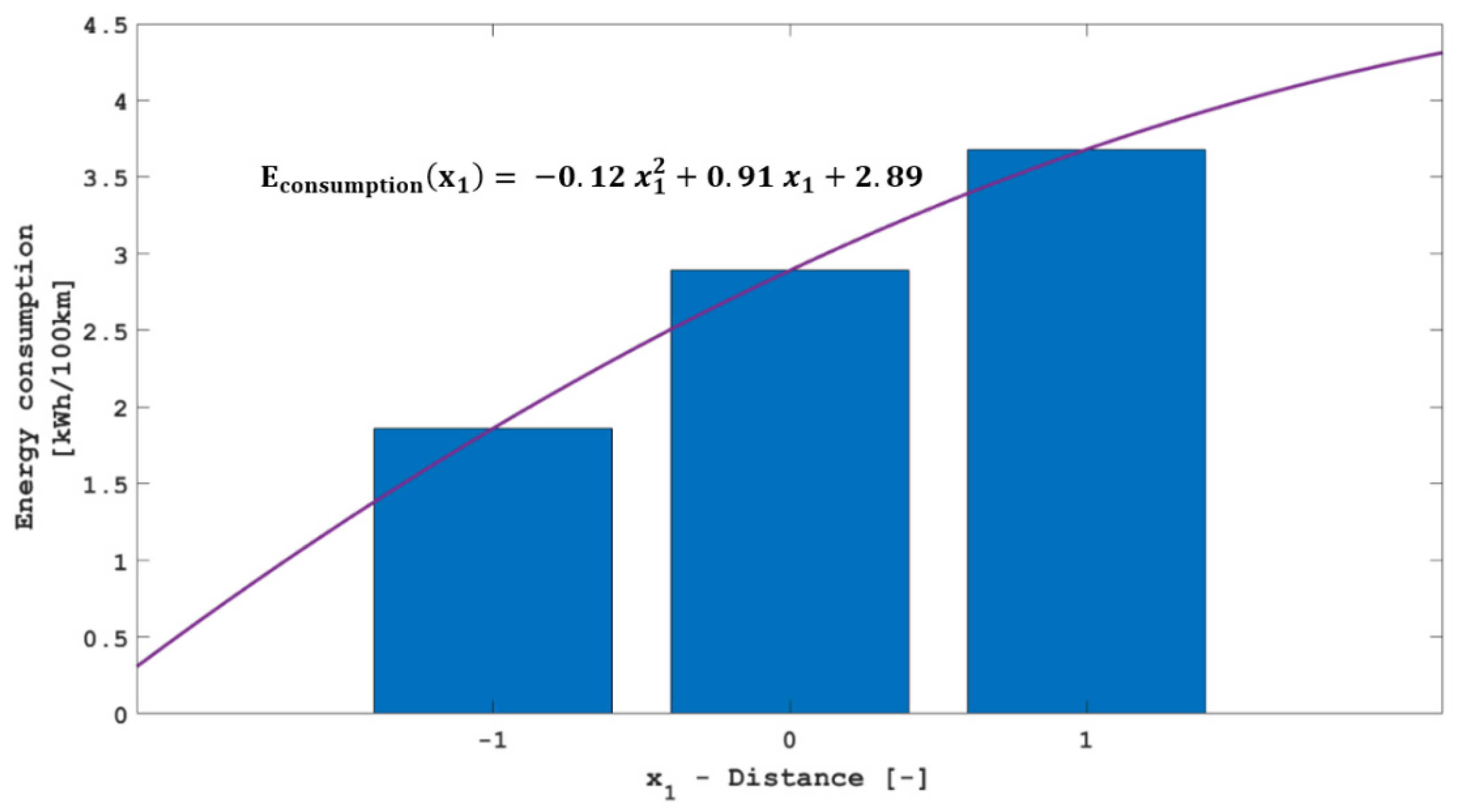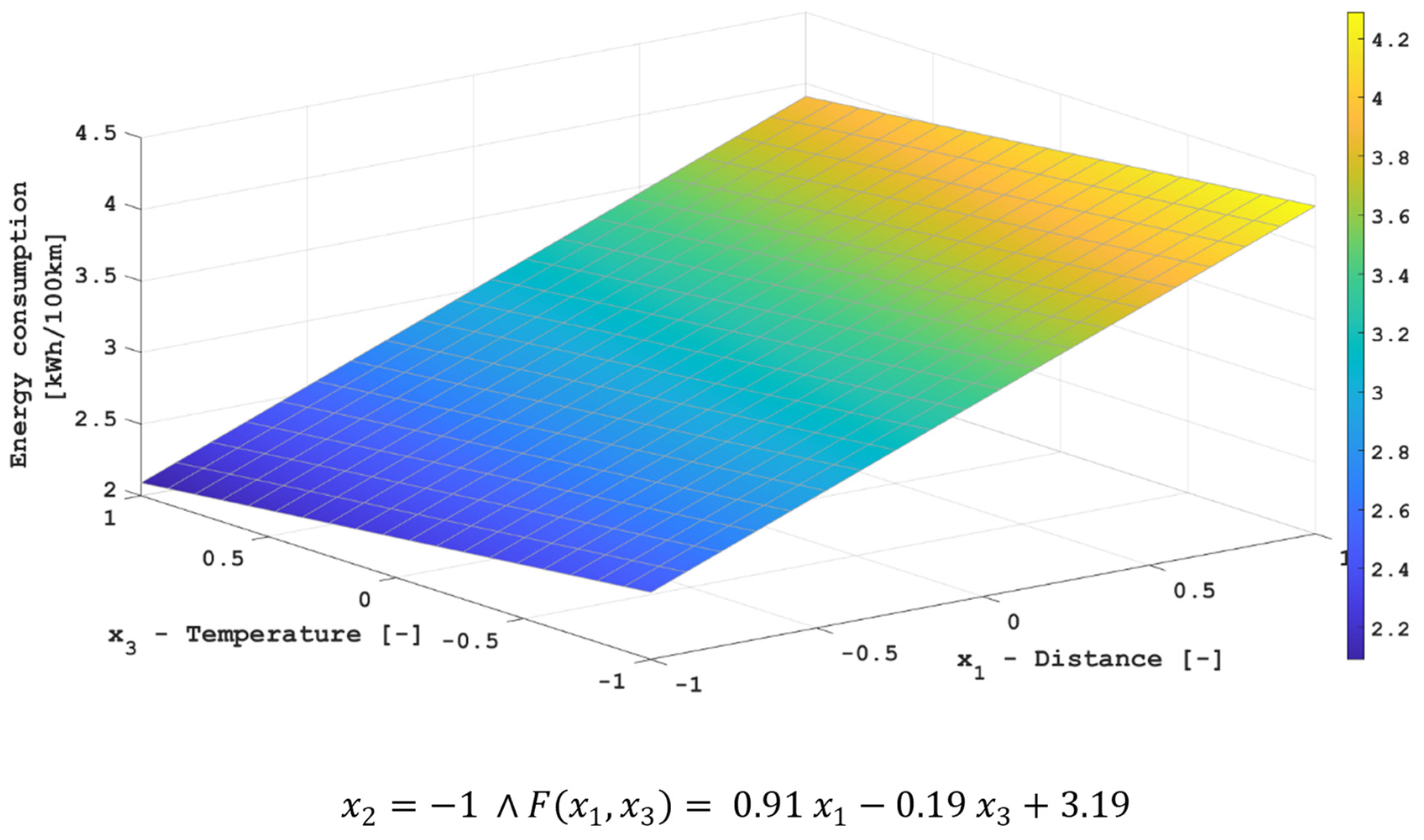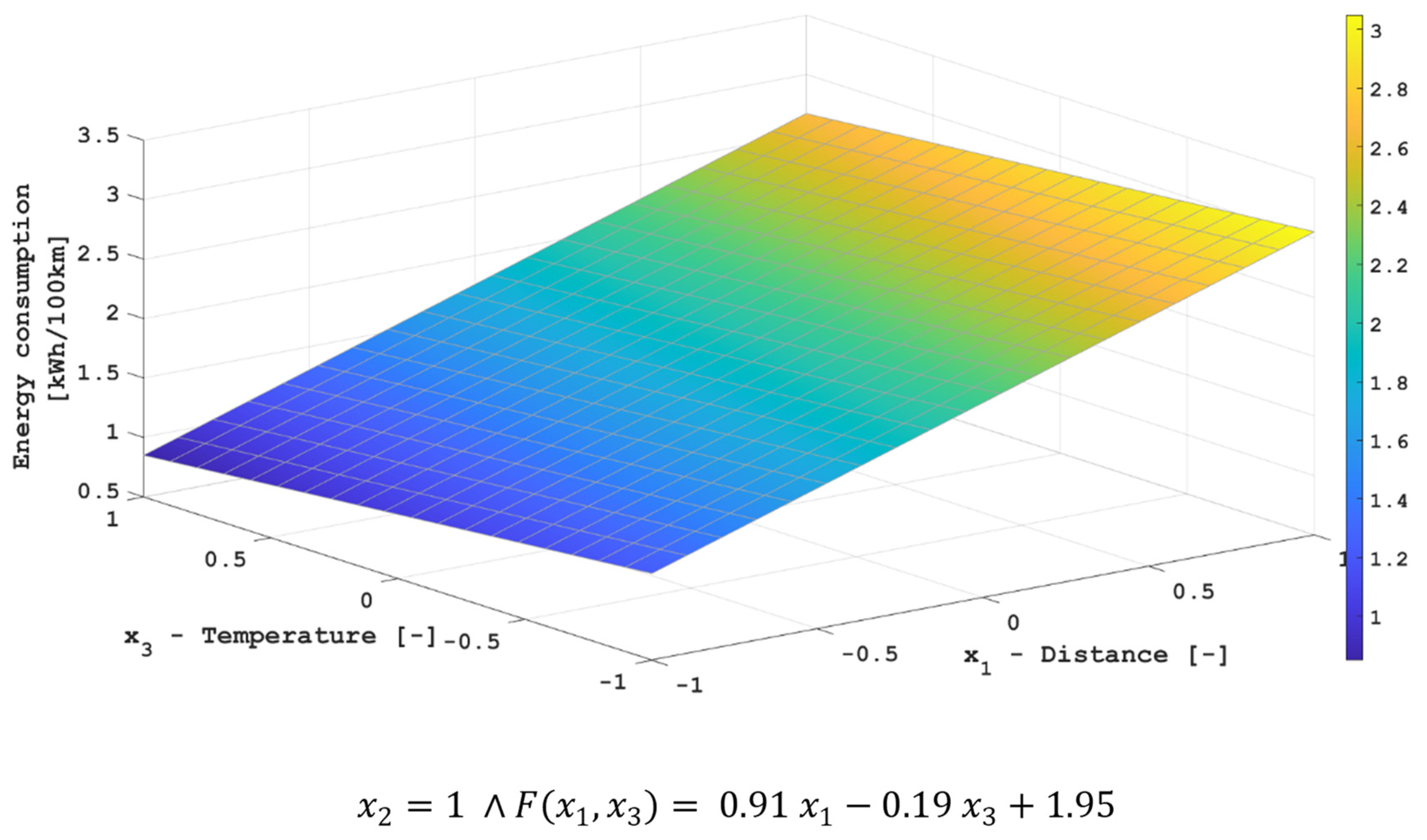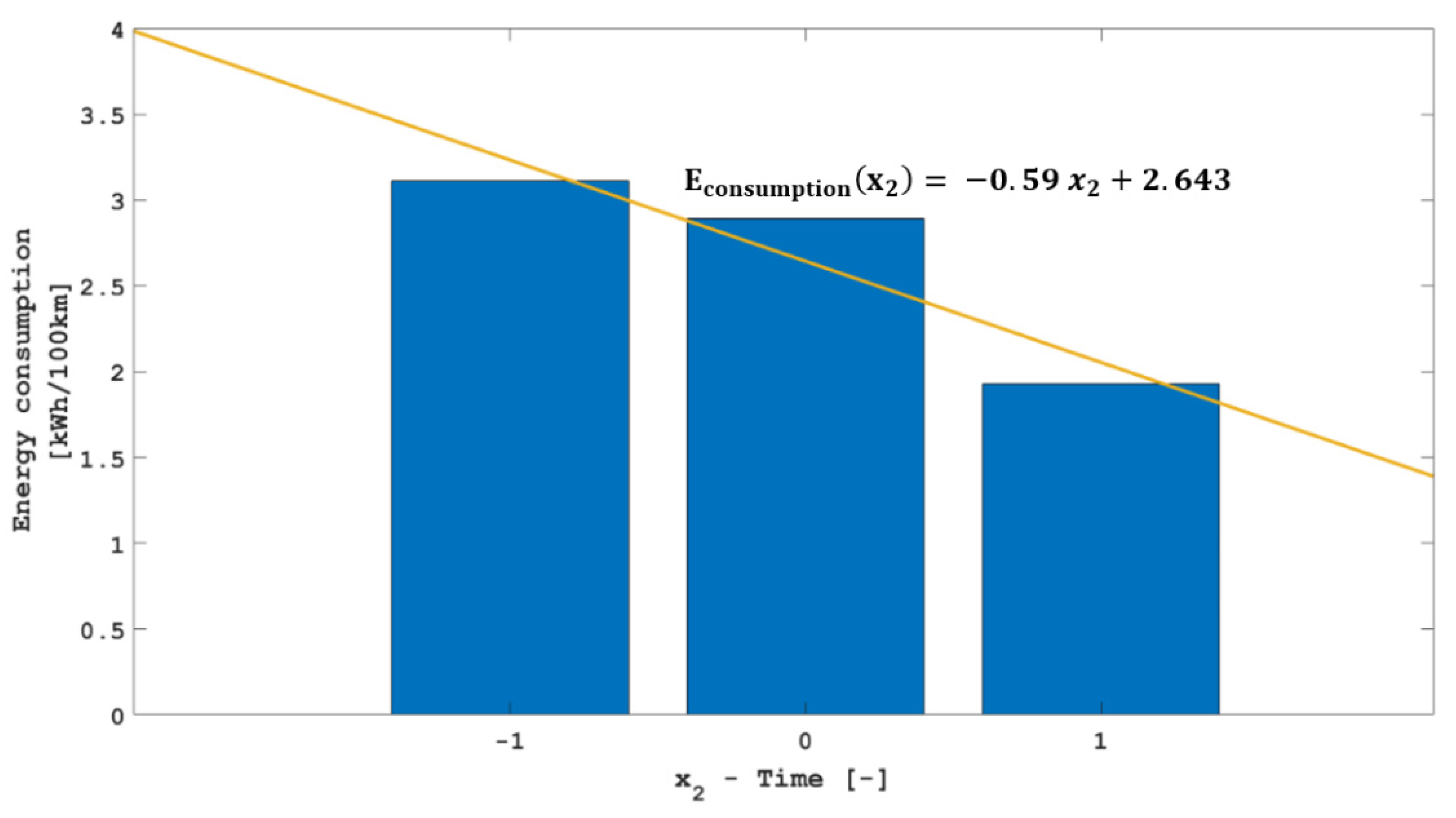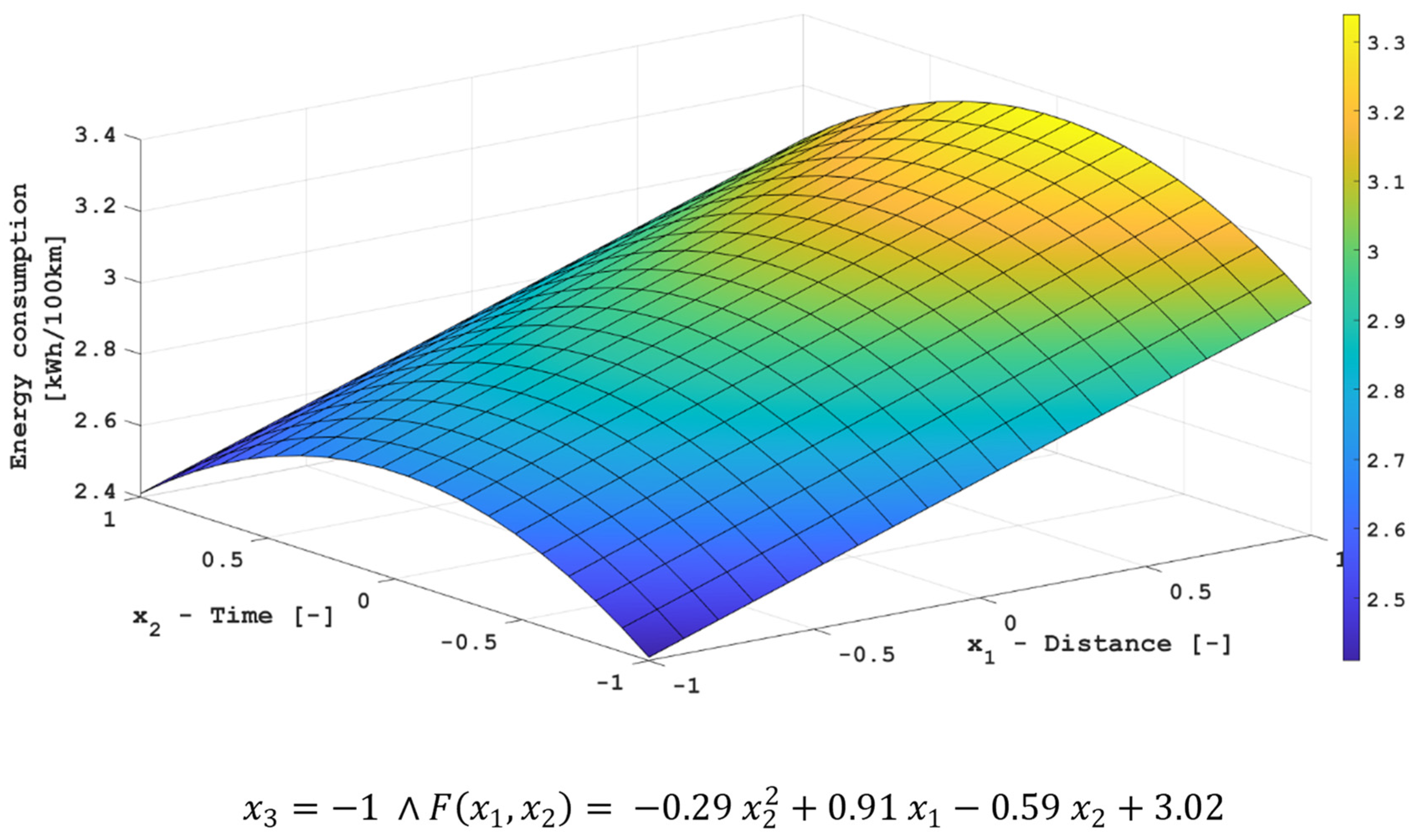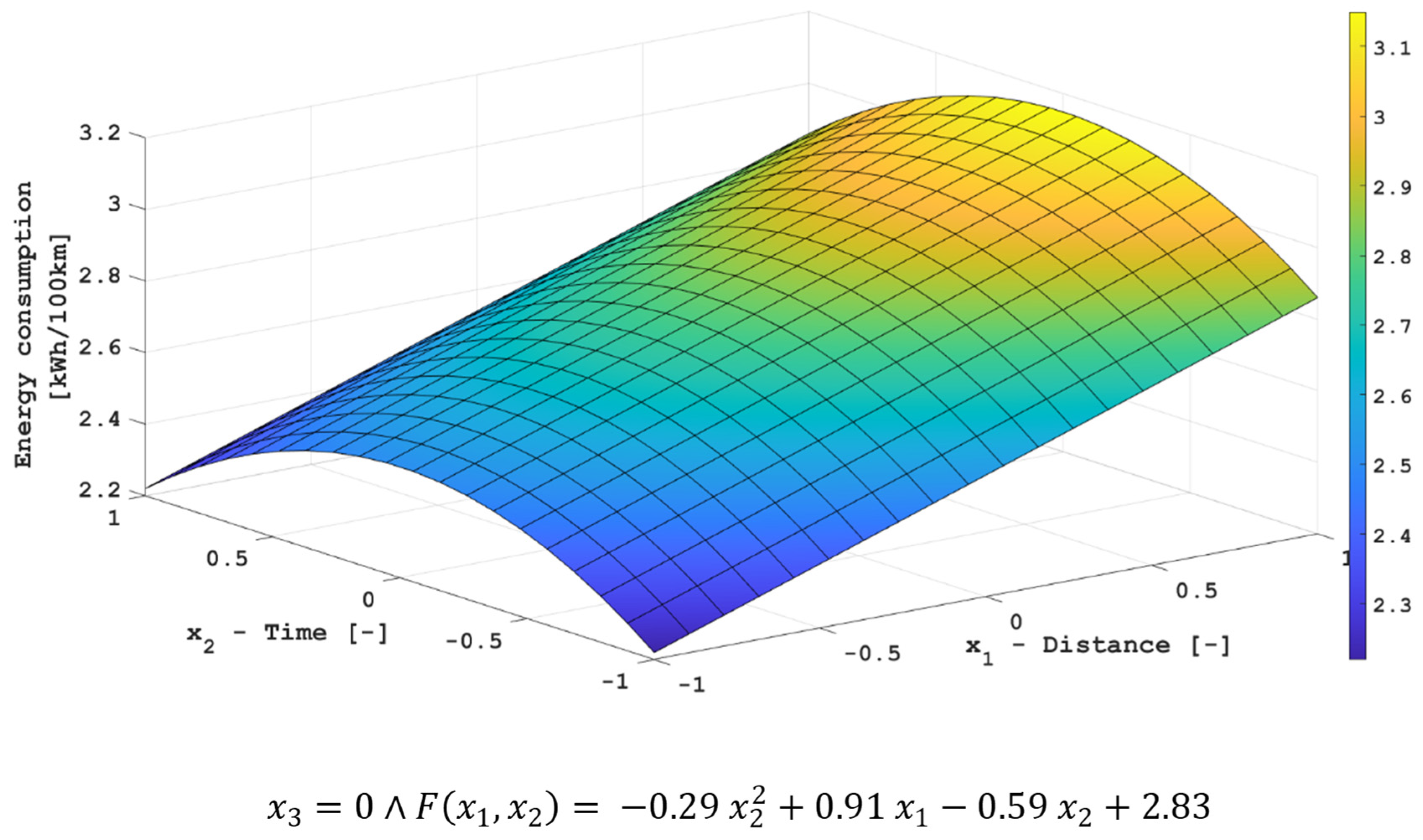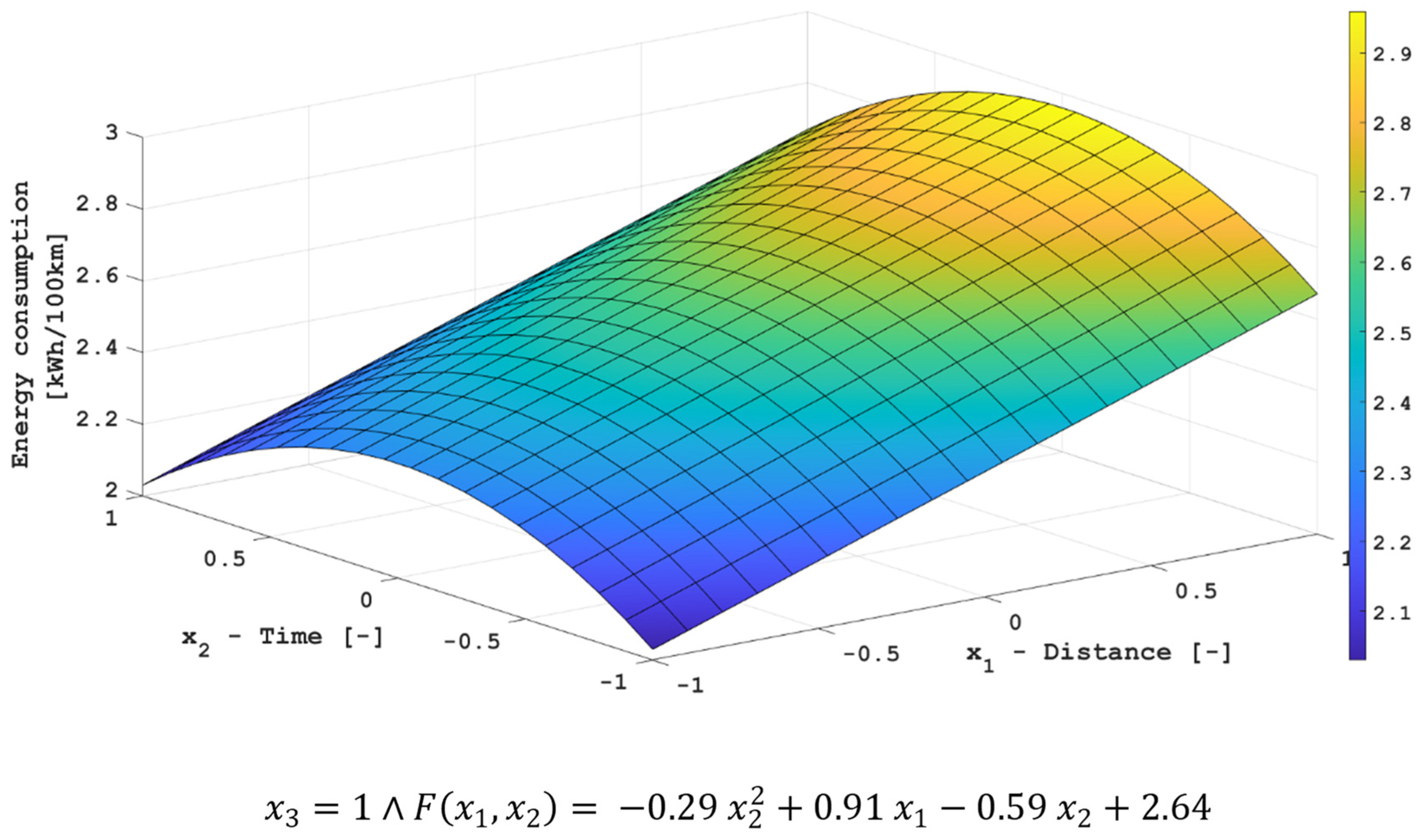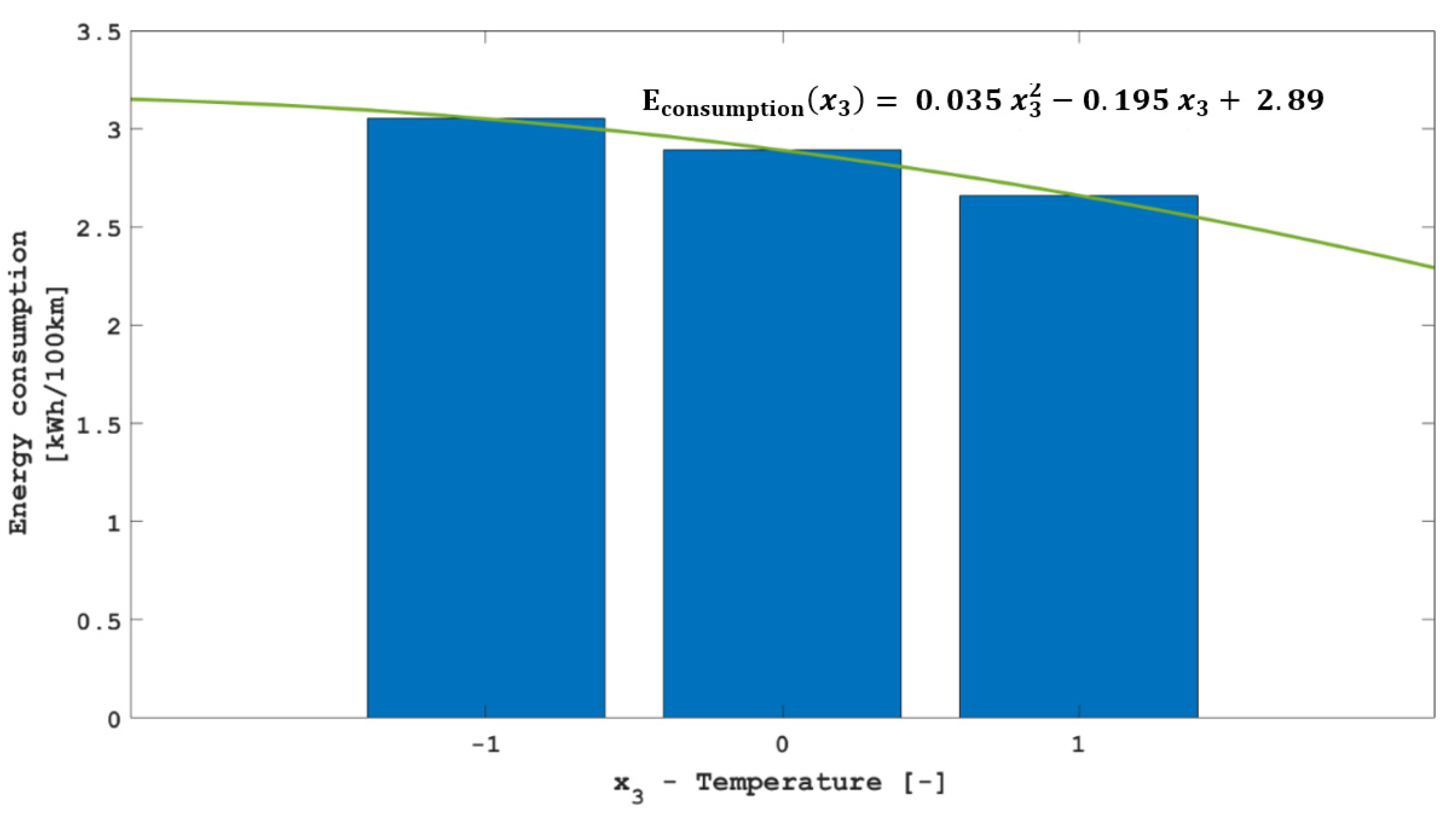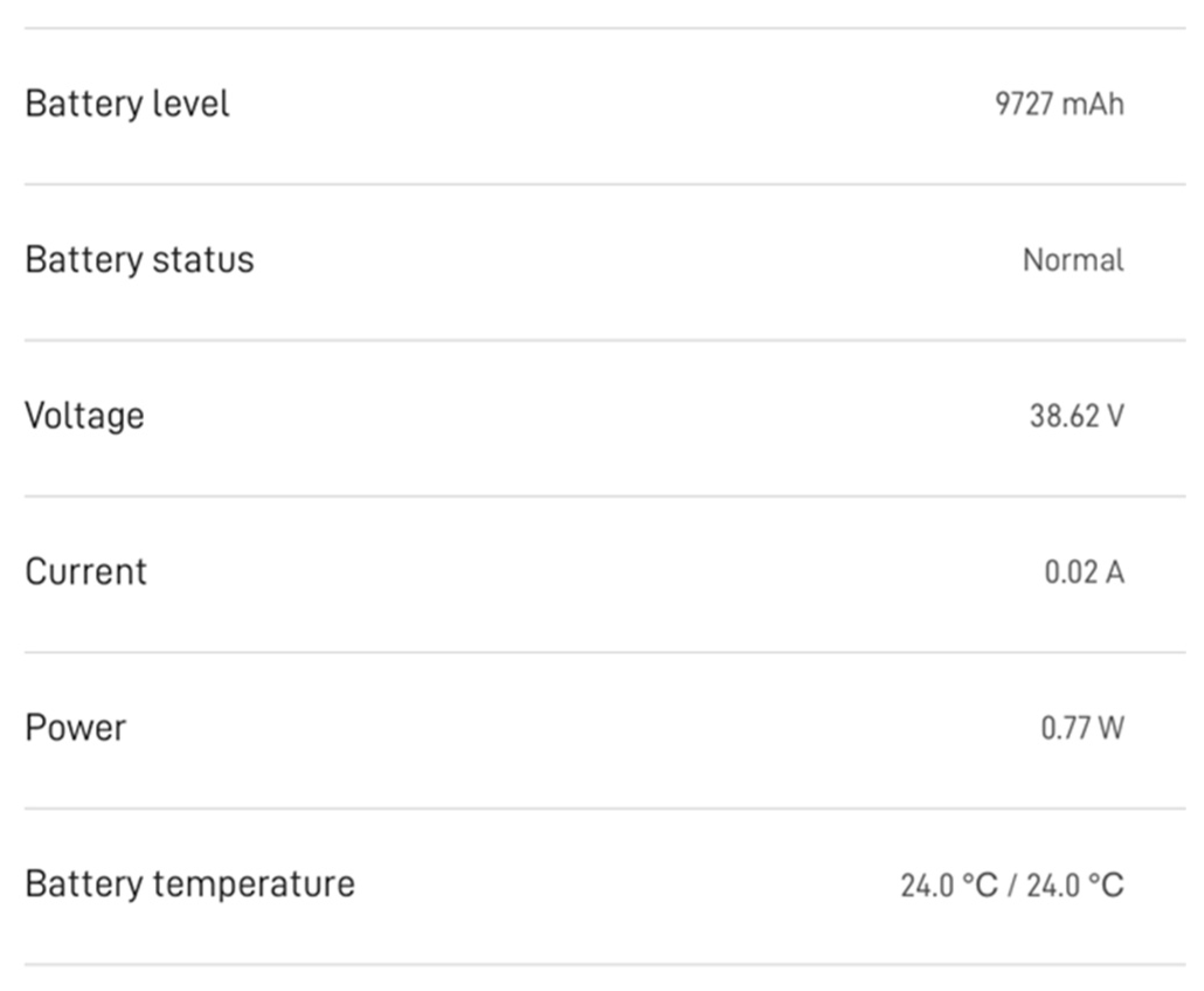1. Introduction
Currently, one of the paths for the development of modern cities, following the as-assumptions of sustainable urban development, is to limit the movement of internal combustion vehicles [
1]. The limitation of the movement of internal combustion vehicles in cities is aimed at using alternative possibilities for the movement of people in cities [
2]. European contributions have been put together to the development of zero- and low-emission transport, which is one of the priorities of the European union’s environmental policy [
3]. One of the seven most important lead projects is the project: a resource-efficient Europe [
3]. Therefore, the emphasis is already on reducing the consumption of resources, including, inter alia, fuels in favor of electricity energy. The maze of various solutions is aimed at reducing the negative impact of transport on the natural environment and, at the same time, encourages society to switch to the so-called “new mobility”, offering many different types of solutions, from travel sharing, vehicle sharing, completely transitioning to electromobility in place of cars, to proper mobility management [
4,
5]. However, one of the solutions which is very widely accepted among the public due to its wide availability, ease of use, and speed of movement is electric scooters [
6,
7].
Given the huge potential of scooters, it is necessary to define the real aspects related to their use. The analysis of the literature indicates the need to conduct research in the field of micro-mobility transport in cities. Swift growth in the number of electric scooters brings with it the emergence of problems that are overlooked in the initial phase of its implementation in cities. Therefore, conducting research on the aspect of using electric vehicles in cities is very important. Another issue is the discrepancies that may result from the misuse or inappropriate use of these vehicles. This article aims to indicate the discrepancies in the energy consumption of electric scooters under appropriate conditions that reflect the movement of the vehicle by different users with different driving styles.
The article has been divided into five chapters. The first of them presents an introduction to the research work. The second presents a review of the literature. The research methodology is presented in the third chapter. The third chapter presents the research results. The results obtained are discussed and summarized in the fourth chapter. Furthermore, the fifth chapter also presents detailed recommendations on the proper handling of scooters in terms of their energy consumption and addresses scooter users and operators of shared mobility systems.
2. Literature Review
The growing popularity of electric scooters has aroused the interest of scientists around the world and has been translated into numerous research works. Among the literature, you can find many works on the legislative issues concerning electric scooters. For example, in his article, Sokołowski showed that European countries and Great Britain have different approaches to electric scooters in legal terms; some perceive them as a means of micro-transport or personal transport, while others define them only in their legislation (directly) [
8]. In some countries, electric scooters are not defined in regulations, but other rules apply (e.g., bicycle regulations) [
8]. Electric scooter users are qualified as pedestrians, riders, or cyclists [
8]. For comparison, Turoń and Czech indicated the need to develop detailed legislation to condition the safe movement of scooters and properly manage them in cities, limiting commuting chaos [
9]. On the other hand, Button et al. emphasized that there is a special need for legislative changes in economic terms, especially during the curious COVID-19 pandemic [
10].
A separate research area is dedicated to the issues of scooter management in urban spaces. For example, Li et al., in their article, detailed a comprehensive comparison of mobility sharing: evidence from 30 European cities [
11] stated that electronic scooter sharing is becoming increasingly attractive, while little attention is paid to the comprehensive comparison of the mobility of sharing electronic scooters in different cities. The authors decided to conduct comparative studies to discover the similarities and differences in electric scooter mobility; data on vehicle availability in 30 European cities were collected and analyzed. The results indicated that there were similarities and differences between the shared services of electronic scooters in cities. The efficiency of use was closely related to the number of electric scooters per person and per area unit [
11]. The results of their research could be used to improve and optimize the use of electric scooters [
11].
On the other hand, Wang et al. found that people often use electric scooters instead of cars, especially in many US cities, suggesting that in many locations, shared e-scooters may be a good strategy for reducing car addiction [
12]. In addition, they argue that electric scooters could complement public transport, highlighting the modal integration and social benefits of introducing shared electric scooters [
12]. Subsequent authors, such as Matyja et al., chose devices to identify the bicycle rides used in shared mobility systems. The same type of device was used to determine the exact position (based on the GPS) of the electric scooter included in the shared mobility system [
13,
14]. The authors proved that the essential factor was the effect of refreshing (sampling) the data to obtain the exact position of the electric scooter [
13,
14]. In addition, on this basis, the route for which the user is billed was determined, which, depending on the precision of the indications, may differ from the actual route [
13,
14]. At the same time, Štraub and Gajda identified predictors that affected behavioral intentions towards shared electric scooters as the aim of the study to help practitioners and policy-makers develop strategies to increase interest in the introduction of shared electric scooters into micro-mobility systems [
15]. On the other hand, Mehzabin Tuli et al. estimated the impact of time variables, such as weather data and time-invariant variables, on the common demand for electric scooters in Chicago [
16]. The results of the time variables indicated that the common demand for electric scooters was higher on days when the average temperature of the air was higher [
16]. The results associated with variables that changed over time indicated that densely populated areas with higher average incomes, more parks, and more open spaces generated more electric scooter trips [
16].
Furthermore, extensive analyzes are concerned, for example, the location or relocation of vehicles, as well as their parking. For example, Ayyildiz focused on determining the location of electric scooter (e-scooter) charging stations and found that economic factors were important in determining the stations’ location [
16]. In turn, Lin et al. considered a multi-objective stochastic location-allocation model for scooter battery swapping stations [
17]. Additionally, Chen et al. focused on location optimization for multiple types of charging stations for electric scooters [
18]. While Wang et al. focused on travel modes that shared e-scooters displaced [
19].
However, there is a wide research gap in scooter research regarding the operational aspects of the functioning of scooters both in cities and in vehicle-sharing systems. Such studies were conducted for other forms of sharing, e.g., car sharing or e-bike-sharing, and their results focused on the real values of energy consumption [
13,
14,
20]. Since energy consumption is the basic factor for determining the proper development of electromobility, this research was dedicated to the real energy consumption of electric scooters, which are used in vehicle-sharing systems.
The research was carried out for the Polish market of e-scooter-sharing services. The Polish market was not chosen by chance; it is constantly being developed [
21]. In Poland, in 2020, more than 40,000 shared mobility systems were available [
21]. In comparison to 2021, this number increased by more than 72% and already amounted to 69,000 vehicles offered for rental in Polish cities [
21]. It should be emphasized that electric scooters are the leader of shared mobility services offered in Polish cities. Currently, electric scooters account for 67% of the entire shared mobility market in Poland [
21]. It is worth mentioning that the Polish market is particularly important to consider in terms of various innovations that may improve the level of its environmental performance because, unfortunately, Poland is at the forefront of the most polluted countries in the entire European union [
22]. In order to promote electric mobility in Poland, various initiatives are being implemented to promote services and good practices [
23,
24]. However, there is a lack of reliable data on how promotional activities translate into real energy values.
The introduction of restrictions on the movement of internal combustion vehicles, in favor of, for example, shared mobility systems (including scooters), could significantly improve the air quality and CO
2 emissions in Poland. It is worth emphasizing, however, that for the electromobility market to be more ecological, electricity should be produced from sources other than solid fuels, such as coal. Unfortunately, producing 1 kWh of electricity results in 798 g of CO
2 emissions, which is 40% of the total CO
2 emissions [
25]. For example, Baek et al. determined that electric scooter-type vehicles are ideally suited for the so-called “last mile logistics” [
26]. This is another aspect that highlights the importance of these vehicles in urban transport systems. Furthermore, Gössling, in his article, proved that electric scooters require less physical effort than bicycles [
27]. In addition, they could reach speeds higher than a cyclist moving around the city.
Boglietti et al. conducted a survey on the future directions of the development of the micro-mobility industry, in which they emphasized the importance of the behavior of electric scooter users. Furthermore, the authors stressed that research on the exogenous issues related to road safety and the environment should be further deepened. The results of the survey showed a lack of studies that separated the accidents and injuries related to electric scooters to provide specific information about them [
28].
Carra et al. emphasized in their research that electric scooters are an alternative to urban transport. They identified key sustainable parameters to inform the excellence and criticality of electric vehicles for personal mobility [
29].
Cieślik et al. focused on the price of energy flow between a backyard photovoltaic installation and an electric vehicle. In their research, they determined the real consumption of the vehicle; the results showed that vehicles in the summer could achieve a lower energy consumption, i.e., 17% for urban conditions and 22% in the countryside. In addition, they also conducted an analysis of the balance of the energy produced from renewable energy sources [
30].
3. Materials and Methods
Access to reliable data on electric vehicles, depending on their usage, is very limited. Few scientists devote their attention to this kind of research. Unfortunately, the energy consumption data from the manufacturer of a given electric vehicle are often defined for ideal conditions. Noticing a research gap in this area, an author proposed a probe to determine the impact of individual operating parameters on the final energy consumption of an electric scooter vehicle. Based on a review of the literature and many years of experience, the research plan was constructed using Hartley’s experimental research plan [
31]. The most important element in planning experimental research is the selection of an experiment plan adapted to the assumed research, which is appropriate to the needs used [
31]. This choice must be supported by the knowledge of information about the tested object (including its operational properties) and the definition of the purpose of the planned and performed tests [
32].
The research carried out was planned according to the theory of poly-selected centralized expert plans; the plan according to Hartley. These plans employ strict guidelines for their use and the subsequent calculation process. In this work, three factors were assumed that impact the result; energy consumption. The factors selected for the research were focused on the data necessary to calculate the completed trip in the shared mobility systems. In addition, they were supplemented with an atmospheric factor, which was the temperature (it had an impact on reducing the range of the vehicle). The input factors were on a real scale (on a standardized scale) and were:
- -
Distance
- -
Time
- -
Temperature
Table 1 shows the experimental plan according to which the research was carried out.
Based on the plan presented in
Table 1, the formulas for the dependence of the individual factors on the final value of energy consumption can be derived according to Formula (1):
where:
F(xi, …, xj) is the final result (value of energy consumption—Econsumption);
xi, …, xj are the input parameters;
k0, ki, kj are the regression coefficients.
The electric scooter used in the research was characterized by the following technical data:
Engine power: 350 W (max 600 W);
Battery capacity: 475 Wh;
Electric scooter weight: 14.5 kg;
Constant battery charging temperature: 20 °C;
Driver weight: 85 kg.
The vehicle used for the tests reflected the vehicles used in shared mobility systems. After each trip, the scooter battery was recharged to the maximum value, so the battery capacity was at the maximum level. After each trip, the values of the current change over time and voltage change over time were read. All values were possible due to the remote reading of the battery management data. An example reading is shown in
Figure 1.
The parameters presented in
Figure 1 include the amount of energy remaining in the battery, voltage values, and current intensity, which are the main factors necessary to determine the energy consumption value of a moving vehicle.
The journeys shown in
Table 2 reflect the conditions of the most frequently used scooters in sharing systems. After each ride, the parameters were recorded and stored in an application dedicated to reading the technical condition of the scooter.
The conducted research allowed for determining the value of electricity consumption needed to move an electric scooter under the selected test conditions based on the experiment plan. Due to the use of an experimental plan of experiments, it was also possible to determine the mathematical formulas for the influence of the individual factors.
4. Results
The results of the tests according to the previously developed experimental plan are presented in
Table 2.
From the research conducted and the results presented in
Table 2 and Formula (1), it was possible to determine the mathematical formulas, the graphical interpretation of which is presented in
Figure 2,
Figure 3,
Figure 4,
Figure 5,
Figure 6,
Figure 7,
Figure 8,
Figure 9,
Figure 10,
Figure 11,
Figure 12 and
Figure 13. The detailed values of the energy consumption of the electric scooter depending on the input factors x
1, x
2, and x
3, i.e., distance, travel time, and temperature, are shown in
Figure 2,
Figure 3,
Figure 4,
Figure 5,
Figure 6,
Figure 7,
Figure 8,
Figure 9,
Figure 10,
Figure 11,
Figure 12 and
Figure 13.
Based on
Figure 2,
Figure 3 and
Figure 4, it can be concluded that the lowest value was achieved at a temperature value of x
3 = 1 (25 °C). Another aspect that affected energy consumption was travel time; extending travel time reduced the energy consumption of the vehicle. This was due to the smoother movement on the roadways and fewer vehicle stops. As shown in
Figure 2,
Figure 3 and
Figure 4, energy consumption could be reduced by up to 50%.
Figure 2.
The energy demand of the scooter when covering the 5 km route.
Figure 2.
The energy demand of the scooter when covering the 5 km route.
Figure 3.
The energy demand of the scooter when covering the 10 km route.
Figure 3.
The energy demand of the scooter when covering the 10 km route.
Figure 4.
The energy demand of the scooter when covering the route of 15 km.
Figure 4.
The energy demand of the scooter when covering the route of 15 km.
Figure 5 shows the average values of the energy consumption of an electric scooter, assuming that the temperature is 20 °C and the journey time is equal to 45 min. It can be seen that the value of the change in energy consumption increases proportionally with the extension of the route. By covering three times the distance, we could reduce the energy consumption of the scooter by approximately 50%. This is due to the fact that the vehicle is moving at a higher speed and has more stops and starts.
Figure 5.
The average consumption values of an electric scooter depend on the distance traveled.
Figure 5.
The average consumption values of an electric scooter depend on the distance traveled.
Other aspects that affected energy consumption were temperature and distance.
Figure 6,
Figure 7 and
Figure 8 show the effect of temperature and distance on the energy consumption of a scooter depending on the time it travels a given distance. As seen in the drawings (
Figure 6,
Figure 7 and
Figure 8), the plane of the diagram is characterized by linear dependence, and as the distances overcome the increase, the values of energy increase linearly. An interesting fact is that the temperature variability did not affect the energy consumption of the scooter.
Figure 6.
The energy demand of the scooter when covering the route in 36 min.
Figure 6.
The energy demand of the scooter when covering the route in 36 min.
Figure 7.
The energy demand of the scooter when covering the route in 45 min.
Figure 7.
The energy demand of the scooter when covering the route in 45 min.
Figure 8.
The energy demand of the scooter when covering the route in 75 min.
Figure 8.
The energy demand of the scooter when covering the route in 75 min.
Figure 9 shows the average values of energy consumption of an electric scooter at an ambient temperature of 20
and a distance of 10 km. Accordingly, the lowest energy consumption was possible with a route time of 75 min. Interestingly, the value for a travel time of 45 min was approximately 30% higher than for a time of 75 min.
Figure 9.
The average consumption values of an electric scooter depend on the trip’s time.
Figure 9.
The average consumption values of an electric scooter depend on the trip’s time.
The last actions considered in terms of energy consumption were traveling time and distance. The values of the energy consumption of the electric scooter are shown in
Figure 10,
Figure 11 and
Figure 12. As seen, the energy consumption values reached their extreme for covering the route in 45 min. An increase in the ambient temperature value by 5 °C reduced the consumption value by approx. 0.2 kWh/100 km.
Figure 10.
The consumption values of an electric scooter at a temperature of 15 °C.
Figure 10.
The consumption values of an electric scooter at a temperature of 15 °C.
Figure 11.
The values of consumption of an electric scooter at a temperature of 20 °C.
Figure 11.
The values of consumption of an electric scooter at a temperature of 20 °C.
Figure 12.
The values of consumption of an electric scooter at a temperature of 25 °C.
Figure 12.
The values of consumption of an electric scooter at a temperature of 25 °C.
Figure 13 shows the average values of the scooter’s electricity consumption, assuming a 10 km route lapping over 45 min for different ambient temperature values. The figure shows that as the ambient temperature increases, the value of energy consumption decreases. However, this decrease was insignificant because it was only approximately 7%.
Figure 13.
The average consumption values of an electric scooter depend on the outside temperature occurring during the trip.
Figure 13.
The average consumption values of an electric scooter depend on the outside temperature occurring during the trip.
5. Discussion and Conclusions
The results of the energy consumption research presented in the article show that riding a scooter according to specific guidelines may lead to significant consumption of electricity by the scooter. The manufacturer of the scooter, which was used for the tests, declared that the level of energy consumption was much lower than the results obtained during the tests. This type of solution could lead to the wrong selection of electric scooters in urban transport systems and also translate into the wrong choice of a vehicle when selecting a scooter to buy by individual users.
Additionally, it is necessary to state that the improper use of scooters and their excessive energy consumption leads to commuting chaos in the form of many unloaded scooters unfit for use. As a result, transport barriers are eliminated, both in the form of the inability to use the service and in the form of commuting barriers for pedestrians (i.e., unsuccessful scooters on the sidewalks). This type of procedure should be eliminated due to the need to reduce transport barriers, especially during the process of the development of shared mobility systems [
33]. Moreover, it should be mentioned that the wrong approach to managing a fleet of scooters directly affects society, its well-being, and the willingness to change the ways of moving, which in effect becomes inconsistent with the main goal of new mobility [
34].
Furthermore, it should be emphasized that the driving style of users traveling around the city with electric scooters is very diverse, but most often, users drive their scooters at their maximum possible speed. It is especially visible due to the numerous accidents, including even fatal ones, involving scooter users [
35]. This situation leads to a much higher consumption of electricity, and hence the need for more frequently charging the batteries installed in vehicles. In addition, more frequent charging of the batteries increases the operating costs of the service providers responsible for the transport availability of scooters in the city. Furthermore, it increases CO
2 emissions because electricity in the Polish market is still generated from fossil fuels, where the production of 1 kWh causes 798 g of CO
2 emission.
Based on the results obtained, the following recommendations are proposed for scooter operators:
Operators should monitor the real energy consumption of scooters in real modes;
Based on their monitoring, operators should establish realistic limits for energy consumption that users should not exceed;
Operators should introduce a system of rewarding the pro-ecological behavior of users as part of appropriate energy consumption by introducing, for example, elements of gamification;
A system of remote power reduction of the vehicle or regulation of its maximum speed should be implemented in case of detecting excessive energy consumption by a given user;
It is worth introducing, for example, user education modes into mobile applications and instructions on how to use the vehicle in the most effective way to cover a given route by the user;
In order to properly select electric scooters for vehicle fleets, this selection should be preceded by a study of the actual electricity consumption and not a selection based on the manufacturer’s catalog. Unfortunately, the catalog data may differ significantly from the values achieved with improper use of the scooter.
From the users’ point of view, it is important to:
Try to find real data, e.g., on the various forums of scooter groups regarding energy consumption, because the values indicated by the manufacturers often do not correspond to reality;
Properly plan their routes, which would allow them to better prepare for the journey and would result in a lower price for the journey;
Check the shared mobility operator’s approach to scooter eco-riding;
Monitor the real level of efficiency of the scooter battery on an ongoing basis.
Moreover, it is recommended that legislators consider the possibility of implementing a proper inspection of scooters and their continuous monitoring, as is the case with cars. This type of practice is used, for example, in Germany, where scooters are homologated and registered [
36]. Proceeding in this way would eliminate many scooters from the market, which, instead of being a real alternative to individual transport, constitutes an architectonic barrier and, in many cases, are ineffective (it is difficult to segregate property due to the fact that it is equipped with an electric battery). The conducted research effectively shows how the values of the electricity consumption of a scooter could change depending on the driving style of a given user in shared mobility systems. Like any research paper, the article has some limitations. The results obtained concern one scooter model (with specific parameters adopted in the study) and one user (with a given weight).
In future papers, it is planned to expand the research to take into account a greater number of input factors that could affect the energy consumption of electric scooters. In addition, it is also planned to include more than one scooter model and different users (of different genders and weights) and to conduct research for other markets in order to allow them to come into contact with the Polish market.

